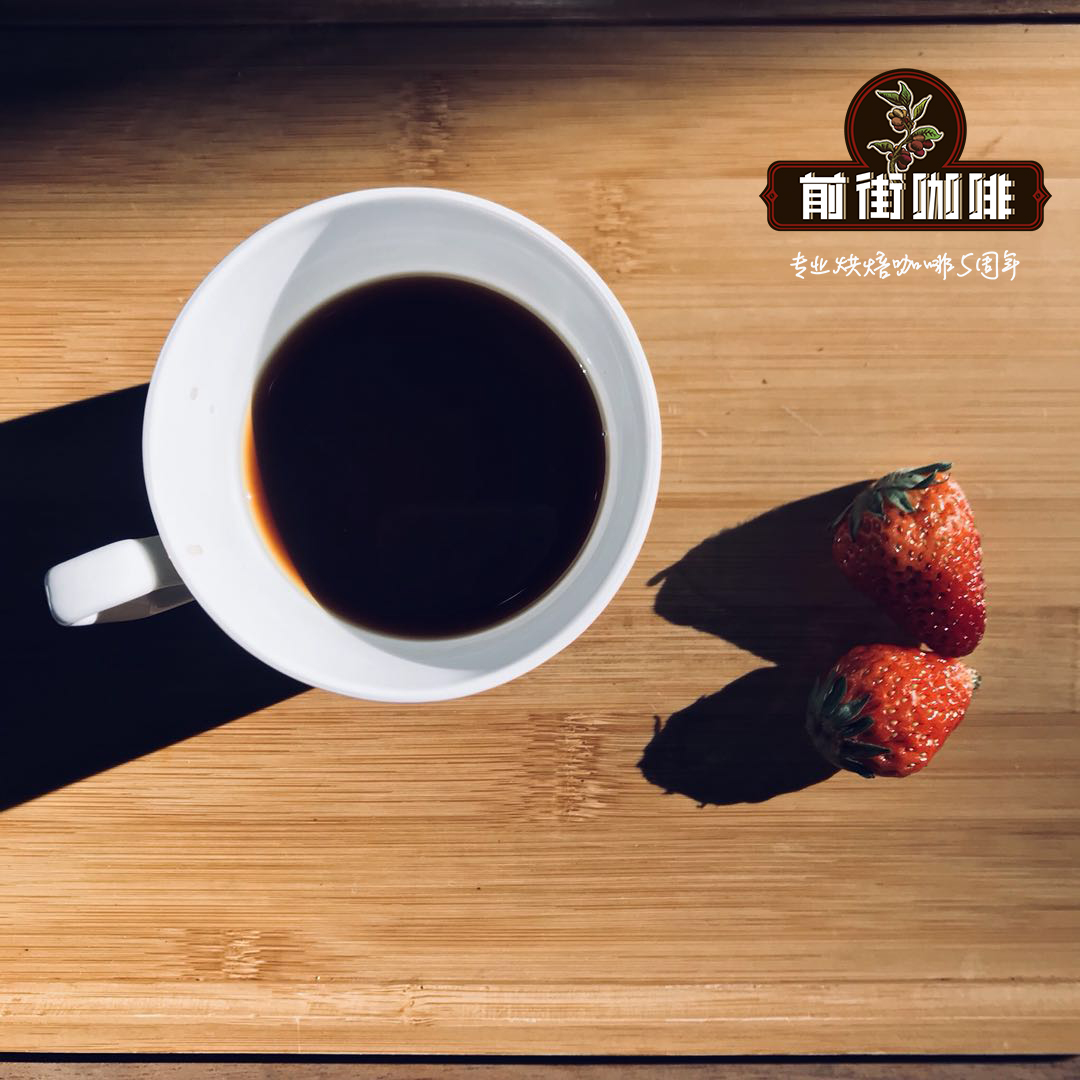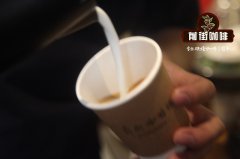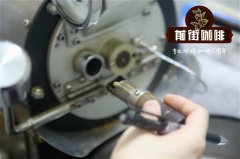Introduction of Papuan Paradise Bird Coffee Bean Variety _ relationship between Paradise Bird and Blue Mountain _ Paradise Bird Coffee Price

Professional coffee knowledge exchange more coffee bean information please follow the coffee workshop (Wechat official account cafe_style)
The breed of Papuan Paradise Bird Coffee turns out to be the oldest and most classic tin card, which is the same as Jamaican Blue Mountain Coffee and Hawaiian kona Coffee! No wonder Bird of Paradise Coffee is expensive, but in addition to a coffee chain that can drink beans from Papua New Guinea, in fact, this very minority coffee from the producing area-Paradise Bird Coffee beans can be easily bought at home.
Typica
Typica is one of the oldest native varieties in Ethiopia. Tibica's top leaves are bronzed and the beans are oval or thin in shape; elegant flavor, but weak physique, poor disease resistance and low fruit yield.
Typica is one of the oldest varieties of Arabica coffee discovered today, and the other is called bourbon. The Arabica species originated in Ethiopia, where it still grows naturally today in the highlands of the pristine rainforest. In the 13th and 14th centuries, the tree was brought to Yemen, and around 1700, iron pickups were planted in Hortus Botanicus in Amsterdam for breeding. The Ironpickup saplings are the first saplings brought from the Dutch royal garden to Central and South America and the New World to be planted. Iron pickup is a pure precious tree species with oval fruit shape, brass leaves and varied fruit flavor.
The iron card species is one of the oldest Arabica tree species and has derived many other variants. The Ironpika bean is slender, the tree is tall, the fruit is oval, and the branches are slightly inclined. The four iron pickups are slender and open, tilting at an angle of 50 to 70 degrees. The coffee yield of each tree is very low, but the cup test score is very high.
Formerly known as Arabica Iron pickup, the Scottish regiment brought the tree to Kenya from Yemen and planted it with bronze leaves. The Hawaiian tin card was introduced from Guatemala and renamed Kona with a brass leaf tip. Due to geographical reasons, the iron pickups planted on other coffee belts in the world are different. Iron pickups have been genetically evolved, and many variants are more adaptable to the surrounding environment and produce new characteristics, which are generally considered to be new varieties, such as Typica in Mexico is slightly different from Typica in Hawaii, so they have different names: Criollo (South America), Arabigo (America), Kona (Hawaii), Pluma Hidalgo (Mexico). Garundang (Sumatra), Blue Mountain (Yomaiga, Papua New Guinea) S ã o Bernado & San Ram ó n (Brazil), Kent and Chickumalgu (India).
The leaf tip of the iron pickup species has a feature, which is red copper, which is called red top coffee. Coffee tree opposite leaves are long oval, smooth leaves, the end of the branch is very long, few branches, and the flowers are white, open at the base of the petiole connecting the branch. The ripe coffee berries look like cherries and are bright red with sweet flesh and contain a pair of seeds, namely coffee beans (Coffee Beans).
Iron pickup is the first coffee variety grown in the new world. The iron pickup planted in Java was a Dutch gift to Father Louis XIV of France and survived in Persian gardens. The seeds were brought to French Martinique by the French in 1720.
Iron pickup is the ancestor of many coffee derivatives. Like other Arabica tree species, the iron pickup has oval fruit and slightly inclined branches. The tin card tree has 3.5-4 Michael, and the branch inclination is 50-70 degrees. The yield of the tin truck is very low, but the cup test quality is very high.
Typica cultivated variety
Java
Java, which has long fruits and bronzed young leaves, is believed to be a descendant of coffee introduced to Java from Yemen. The variety was first brought from Java to neighboring islands (Timor) and then to East Africa (Cameroon) and was planted in 1980. Introduced to Central America by CIRAD (International Center for Agricultural Research and Development). In Cameroon, this variety is known for its moderate yield and good resistance to coffee berry disease.
Maragogype
Elephant bean, a mutant of Typica, was first discovered in Brazil in 1870. The fruit is large, long and a little twisted, and the plant has long internodes and large leaves. The output is relatively low.
Kent
A tall Typica variety of the Kent/ Kent region of India. This variety has been widely cultivated in India since 1930. One of the varieties is called K7, which is more common in Kenya and is the best rust-resistant coffee bean variety.
Iron pickup coffee beans
Typica: the shape is oval, and the bean body is thin from the side. even if the altitude of the planting area is different, the thickness of the side of the raw bean will not be too different.
Iron card species are most likely to be taken by Yemenis from Ethiopia to Malabar and India, and then to Indonesia by the Dutch. It was then brought from West India to the French colony of Martinique.
Subsequently, it grew in other planting areas and derived many variants: Criollo (South America), Arabigo (Central America), Kona (Hawaii), Pluma Hidalgo (Mexico), Garundang (Sumatra), Blue Mountain (Jamaica, Papua New Guinea), San Bernado & San Ramon (Brazil), Kents & Chickumalgu (India).
These are all tin cards.
Taste evaluation
The Blue Mountains of Jamaica (Typica):
Baking degree: medium and deep baking
Dry aroma: roasted peanuts (roasted peanut), hazelnuts (hazelnut), melons (melon), chocolate (chocolate-like)
Wet fragrance: oolong tea (rose-tea), caramel (caramel), honey (honey), chocolate (black- chocolate), almond skin (almond skins), silky taste (silky mouthfeel), bright feeling (brightness)
Taste: sweet, bitter and shallow, mellow and balanced, rich in layers, with obvious taste of dark chocolate, honey and sucrose, with a sticky feeling. After complete cooling, the strong aroma of oolong tea has the sticky feeling of caramel syrup when touched with fingers.
Recommended cooking method: hand flushing
Degree of grinding: 4 (Fuji R440)
Water temperature: 88 °C
Other suggestions for trickling extraction:
Normal pressure, recommended grinding degree of 3.5-4 / water temperature 90 °C
Philharmonic pressure, recommended 2.5 grinding degree, water temperature 88 °C
Siphon kettle: 3.5 grindability
Huaguoshan, Yunnan (Typica):
Baking degree: medium baking
Dried fragrance: pear fruits (pear-fruit), vanilla (vanila-like), honey (honey-like), peach tea (peach tea), ripe oranges (ripe orange), jasmine (jasmine hints)
Wet fragrance: nutty (nutty), milk chocolate (milky chocolate), herbs (herbal-floral)
Palate: supple in the mouth, aroma of Asian herbs, lively and bright sour taste, good balance between cheeks, soft acidity, mellow balance, rich layers, obvious taste of dark chocolate, honey and sucrose, brown sugar flavor after complete cooling.
Recommended cooking methods: siphon, hand flushing
Degree of grinding: 4 (Fuji R440)
Water temperature: 90 °C
Other suggestions for trickling extraction:
Normal pressure, recommended grinding degree of 3.5-4 / water temperature 90 °C
Philharmonic pressure, recommended 2.5 grinding degree, water temperature 88 °C
Hand punch: 3.5 degree of grinding, water temperature 89 °C
Bird of Paradise (Typica):
Baking degree: medium depth baking
Dry aroma: nutty, woody, spicy
Wet incense: sugarcane sweet (cane), hazelnut (hazelnut), toast-like
Palate: the sweetness of toast, the sweetness of nuts, the acidity and sweetness of some acidity form a good layer, and the finish of the spices is very sweet.
Recommended cooking method: hand flushing
Degree of grinding: 4 (Fuji R440)
Water temperature: 89 °C
Other suggestions for trickling extraction:
Normal pressure, recommended grinding degree of 3.5-4 / water temperature 90 °C
Philharmonic pressure, recommended 3 degree of grinding, water temperature 85 °C
Siphon: 4.5 degree of grinding, water temperature 91 °C
Paradise Bird Coffee Bean Brand recommendation
Papua New Guinea Paradise Bird Coffee beans baked on Qianjie Coffee are fully guaranteed in terms of brand and quality. And more importantly, the performance-to-price ratio is extremely high, a pack of half a pound 100 grams, the price is only about 85 yuan. According to the calculation of 15 grams of powder per cup of coffee, 15 cups of coffee can be made in a bag, which costs less than 6 yuan per cup, which is recommended by conscience compared to the price sold in cafes for dozens of yuan a cup.
More promotional activities
Please keep an eye on us.
Our Taobao shop: coffee shop in front of the street cafe
Important Notice :
前街咖啡 FrontStreet Coffee has moved to new addredd:
FrontStreet Coffee Address: 315,Donghua East Road,GuangZhou
Tel:020 38364473
- Prev

Papua New Guinea Coffee _ Paradise Bird Coffee Bean flavor description _ how much is a cup of Paradise Bird Coffee
Professional coffee knowledge exchange more coffee bean information please follow Coffee Workshop (Wechat official account cafe_style) 01 | production area profile Papua New Guineans regard the beautiful bird of paradise as a bird of freedom and joy, a gift from the gods. PNG AA Sigri Manor Arabica Coffee, like the migration of birds, is a long journey from the Blue Mountain Iron Card of Jamaica to Babu.
- Next

Papua New Guinea bird of paradise coffee roasting teaching_bird of paradise coffee beans how much is a pack
Professional coffee knowledge exchange More coffee bean information Please pay attention to coffee workshop (Weixin Official Accounts cafe_style) Want to learn your own baking? The bean dryer isn't the problem, it's the baking technique. Today, Qianjie Coffee takes Bird of Paradise coffee beans as an example to share some experiences and experiences of coffee bean roasting. Green beans account for 60% of the factors that affect the taste of a cup of coffee.
Related
- Does Rose Summer choose Blue, Green or Red? Detailed explanation of Rose Summer Coffee plots and Classification in Panamanian Jade Manor
- What is the difference between the origin, producing area, processing plant, cooperative and manor of coffee beans?
- How fine does the espresso powder fit? how to grind the espresso?
- Sca coffee roasting degree color card coffee roasting degree 8 roasting color values what do you mean?
- The practice of lattes: how to make lattes at home
- Introduction to Indonesian Fine Coffee beans-- Java Coffee producing area of Indonesian Arabica Coffee
- How much will the flavor of light and medium roasted rose summer be expressed? What baking level is rose summer suitable for?
- Introduction to the characteristics of washing, sun-drying or wet-planing coffee commonly used in Mantenin, Indonesia
- Price characteristics of Arabica Coffee Bean Starbucks introduction to Manning Coffee Bean Taste producing area Variety Manor
- What is the authentic Yega flavor? What are the flavor characteristics of the really excellent Yejasuffi coffee beans?

